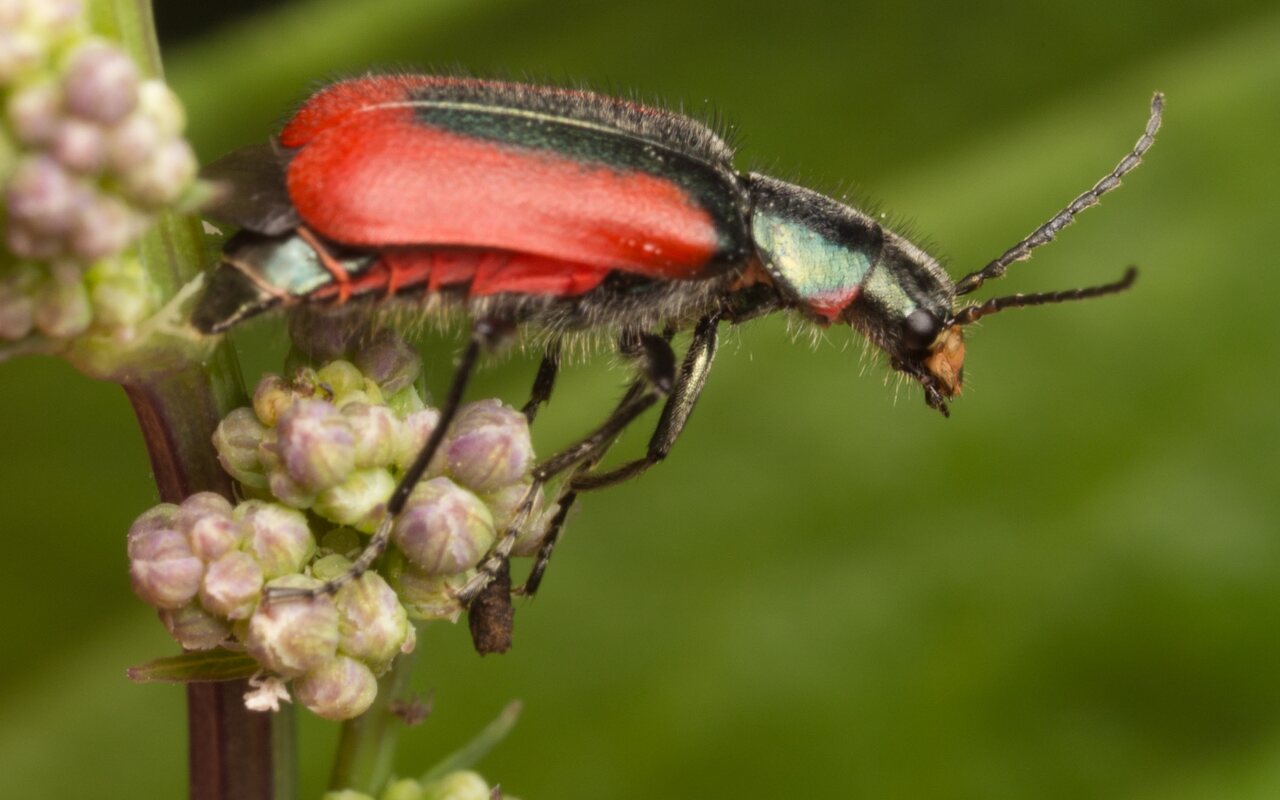
Malachius aeneus · žaliasis pūsliavabalis
- scarlet malachite beetle
- Metalfarvet dunblødbille, Metalfarvet dunblødvinge, Stor malakitbille
- Große Blasenkäfer
- žaliasis pūsliavabalis
- spīdīgais māņmīkstspārnis
- glanzende bastaardweekschildkever, bronsweekkever, malachietkever
- bęblik strojny
- ukbeetles.co.uk/malachius-aeneus
- flickr.com/photos/63075200@N07/albums/72157629587411285
- gbif.org/species/4449367
It is easily confused with the much rarer Malachius rubidus (tops of elytra without yellowing).
This very widespread species occurs throughout Europe north to the Arctic Circle and east through Asia Minor to Siberia, it is also found all over the Middle East and, following introductions, is widespread in North America and Canada. Across much of this range, especially in Europe, there has been a severe decline in recent decades but it remains locally common in some parts of northern Europe. Adults are short-lived, about 3 weeks, and in any given year the season lasts for about a month. They typically occur among long grass in flower meadows or along hedges bordering agricultural land, they are active in bright sun and visit a range of flowers e.g. Ranunculus, Brassicas and cereal ears, feeding upon pollen but they are also known to be predate other insects and their larvae on these flowers. Little is known of the biology but on the continent larvae occur in dry, decaying wood, under bark and in dry rot-holes, and in the UK they have been found under logs, which is typical of the family-in general malachid larvae develop in wood through the summer and then overwinter and pupate in the spring.
6-7mm. Head dark metallic green or blue with yellow mouthparts, pronotum dark metallic with pale anterior angles, elytra metallic green across the base and along the suture, otherwise red. Dorsal surface with fine semi-erect dark pubescence. Appendages dark metallic although the tarsi are often to some extent yellow. Antennae sexually dimorphic, the second and third segments expanded internally in the male.
‥
0 comments
Add a comment